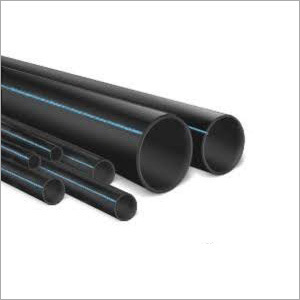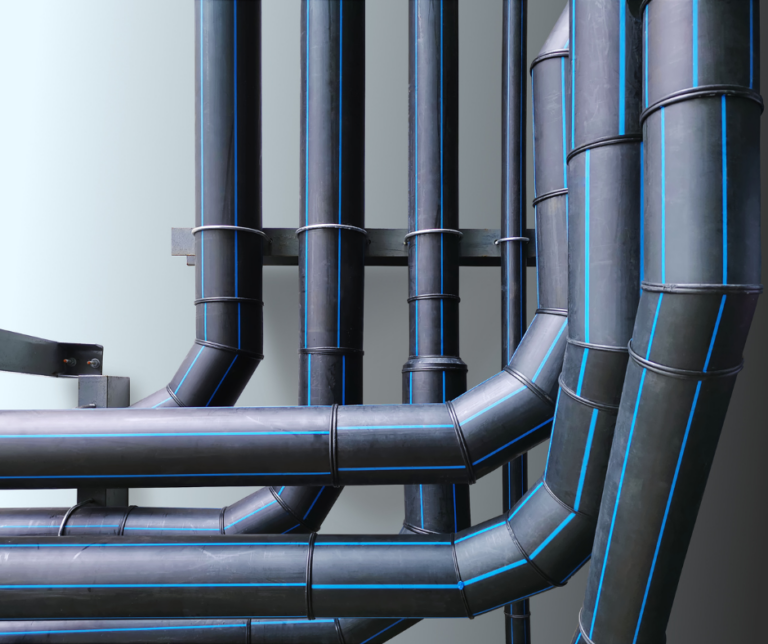Pipe Manufacturing Midland TX: From Raw Material to Finished Pipe
The Essential Actions for Successful Installment of HDPE Pipe in Your Following Task
Effective installation of HDPE pipeline requires cautious planning and implementation. Trick actions include assessing job requirements, preparing the site, and selecting appropriate signing up with techniques. Each phase plays a critical function in ensuring the integrity and performance of the pipe. Understanding these essential steps can significantly influence the overall success of the job - American Plastics HDPE Pipe for Oilfield. The subtleties of each action may hold the secret to conquering common difficulties encountered throughout installation.
Recognizing the Conveniences of HDPE Pipe
High-density polyethylene (HDPE) pipe uses numerous benefits that make it a preferred option for numerous applications. Its high resistance to deterioration and chemicals warranties toughness sought after settings, greatly expanding the life expectancy of installments. Additionally, HDPE's adaptability permits for much easier installation, especially in difficult surfaces, as it can flex without breaking. The light-weight nature of HDPE pipe streamlines transport and handling, reducing labor expenses during setup.
Additionally, HDPE pipeline is recognized for its low rubbing coefficient, which boosts fluid circulation and decreases energy usage. Its smooth building and construction reduces the danger of leaks, adding to much better resource monitoring and environmental management. On top of that, HDPE is recyclable, aligning with sustainable techniques and minimizing environmental influence. Overall, the mix of strength, adaptability, and eco-friendliness makes HDPE pipeline a premium selection for a variety of tasks, from water distribution to commercial applications.
Preparation Your HDPE Pipe Installation
When preparing an installment of HDPE pipeline, careful factor to consider of a number of crucial factors is important to protect an effective task. Job supervisors need to assess the details requirements of the pipeline, including the meant use, flow rates, and environmental conditions. Comprehending these criteria will lead the option of proper pipeline dimensions and product grade.
Next off, timelines ought to be developed, considering purchase timetables and any type of potential hold-ups. Sychronisation with regional authorities for licenses and regulatory conformity is also crucial. Additionally, an in-depth budget needs to be prepared, including all costs connected with products, labor, and machinery.
It is essential to involve a qualified team experienced in HDPE pipe setup. Their know-how will assist alleviate risks, assurance adherence to market standards, and eventually contribute to the job's success. Detailed preparation prepares for a smooth installation procedure and durable performance of the HDPE piping system.
Preparing the Site for Setup
Correct website preparation is essential for the effective installation of HDPE pipe. Before installation starts, the site should be completely assessed to assure it meets all needed demands. This consists of evaluating the ground for existing frameworks, utilities, and potential threats that can impede the installation procedure.

Proper elevation and placement must be established to keep a consistent gradient for drain purposes. Correct drainage around the installation site is additionally imperative to stop water buildup, which can result in complications down the line.
Techniques for Joining HDPE Pipes
Accomplishing a trustworthy link in between HDPE pipes is essential for making certain the honesty and longevity of the installation. Different strategies exist for joining these pipes, each matched for various task needs. Fusion welding is among the most common methods, using warm to bond the pipe ends with each other, producing a smooth and durable link. This technique can be further classified right into socket combination and butt combination, depending upon the pipe configurations.
Mechanical installations are an additional option, using clamps and threaded adapters to join sections of HDPE pipe. While generally faster to set up, they may need additional upkeep gradually. Electrofusion is a specialized technique that includes utilizing electrical current to warm and fuse the pipes via specially made fittings, ensuring a strong bond. Selecting the appropriate joining method is essential, as it straight affects the general efficiency and integrity of the HDPE piping system in the designated application.
Evaluating and Assessment of Installed Pipeline
The screening and assessment of set up HDPE pipes are crucial to ensuring their functionality and longevity. This process encompasses visual assessment strategies, stress screening techniques, and leak discovery procedures to determine potential issues. By employing these methods, professionals can verify the stability of the setup before it is put into usage.
Visual Inspection Techniques
Utilizing efficient aesthetic assessment techniques is essential for ensuring the stability of set up HDPE pipes. Examiners must systematically examine all visible sections of the pipe to recognize any kind of indicators of damages, misalignment, or incorrect setup. Key indications to examine include joint honesty, surface area abnormalities, and links. Inspectors might use tools such as multiplying glasses or cameras to enhance presence and information. It is necessary to look for signs of ecological anxiety, such as twisting or extreme bending, which could compromise performance. Constant paperwork of findings enables tracking modifications with time and aids overview essential repairs. By adhering to established aesthetic inspection methods, job groups can notably decrease the danger of future failings and guarantee lasting dependability of the piping system.
Stress Checking Approaches
Aesthetic examination serves as an initial step, yet it is not adequate by itself to assure the performance of mounted HDPE pipelines. Pressure screening methods are vital for making certain the honesty of these systems. Usually, hydrostatic testing is employed, where the pipelines are filled with water and subjected to here pressure degrees over the intended operating pressure. This method assists recognize weak points or potential leaks. Pneumatic screening can likewise be used, although it carries higher threats due to the compressibility of air. No matter of the technique picked, sticking to market criteria and safety protocols is essential. After performing stress examinations, thorough paperwork is necessary to verify the outcomes and confirm that the setup satisfies all functional requirements prior to proceeding to the next phase of the task.

Leak Detection Procedures
Just how can one guarantee that installed HDPE pipelines are complimentary from leaks? Effective leak detection procedures are important to protect the stability of the system. Aesthetic inspections need to be performed, looking for signs of water build-up or dirt erosion around pipe joints. Following this, pressure screening can confirm the system's toughness. A common method is the hydrostatic test, where water is presented under stress, monitoring for drops that suggest potential leaks. In addition, advanced technologies, such as acoustic sensing units or infrared thermography, can detect leaks that may not show up. Regular surveillance and upkeep further add to the long life of HDPE pipelines, ensuring they stay leak-free throughout their functional life expectancy. Correct documents of these procedures is crucial for conformity and future referral.
Upkeep Tips for Long-Term Performance
To assure the longevity of HDPE pipelines, developing a normal inspection schedule is important. This aggressive method enables the early discovery of potential problems, lessening pricey repairs. Furthermore, implementing correct cleaning techniques will assist keep peak performance and stop build-up that can affect capability.
Routine Examination Schedule
Although HDPE pipelines are understood for their resilience and resistance to corrosion, developing a regular examination schedule is vital for ensuring their lasting performance. Regular assessments aid identify possible concerns such as leaks, joint integrity, and environmental impacts that may influence the pipe's capability. It is advised that examinations take place at the very least biannually, or a lot more often in atmospheres with severe problems. custom hdpe pipe manufacturing Midland TX. Throughout these analyses, visual checks need to be carried out to find indicators of wear or damages. In addition, utilizing modern technology such as ultrasonic screening can give more insights right into the pipe's condition. By implementing an organized examination timetable, job managers can proactively address problems, consequently expanding the life-span of HDPE pipelines and preserving system efficiency
Proper Cleaning Techniques
Proper cleansing techniques play an important role in preserving the lasting performance of HDPE pipes. Normal cleansing prevents the accumulation of debris, debris, and biofilm, which can bring about blockages and minimized circulation efficiency. Operators must use approaches such as high-pressure water jetting or foam cleansing to efficiently remove pollutants without harming the pipe surface. It is vital to avoid utilizing severe chemicals that may weaken HDPE material. Additionally, arranged maintenance checks must include visual examinations for any indications of wear or damage. Properly trained employees must perform these cleaning processes, making certain conformity with safety and environmental guidelines. By applying these methods, the life-span of HDPE pipes can be substantially extended, guaranteeing suitable efficiency throughout their functional life.
Often Asked Questions
What Are the Ecological Influences of HDPE Pipe Manufacturing?
The ecological influences of HDPE pipe production consist of greenhouse gas emissions, energy usage throughout production, possible plastic pollution, and challenges in reusing. HDPE's durability and resistance to corrosion can alleviate some environmental problems.
Exactly How Does HDPE Pipe Contrast to Various Other Products?

What Equipment Are Necessary for HDPE Pipe Installment?
Vital tools for HDPE pipeline installment include a fusion equipment, pipe cutters, shovels, gauging tape, and security equipment. Correct equipment guarantees effective, safe handling and setup, adding to the project's total success and integrity.
Exist Any Kind Of Specific Regulations for HDPE Pipeline Installment?
Particular policies for HDPE pipeline installment vary by area, typically regulated by regional, state, or federal codes. Conformity with these laws guarantees security, environmental protection, and functionality, making adherence vital for successful project end results.
Can HDPE Piping Be Recycled After Use?
Yes, HDPE pipes can be recycled after use. Their polycarbonate nature permits for reprocessing, making them suitable for reusing into brand-new items. This sustainability facet adds to environmental conservation and promotes round economy practices in building and construction.